Writing About Writing
- Christina Dendy

- Nov 9, 2023
- 6 min read
Updated: Nov 10, 2023
Children's picture books cover a wide range of topics and styles. They can be narrative fiction, meaning they tell a story. They can also be concept books that explores a basic early learning subject, like numbers, shapes, or types of animals, and nonfiction books that explore subjects in greater factual detail. They can blend those genres, e.g., a narrative biographical picture book or a book that combines nonfiction and fictional elements. Some picture books are metafiction, or stories that explore themselves or some aspect of their own creation and narrative structure. Such books draw attention to themselves as written artifacts. They may break the metaphorical "fourth wall," an imaginary boundary between the story and its readers. Working on a recent workshop, I pulled several metafiction and narrative picture books that explore the writing process. I thought I'd share some of them here:
Violet and Victor Write the Most Fabulous Fairy Tale and Violet and Victor Write the Best-Ever Bookworm Book by Alice Kuipers and Bethanie Deeney Murguia
I love these two titles not only for their fabulous illustrations but also because they show the power of collaboration, of swapping ideas and telling stories together. They also highlight the importance of conflict and the need to keep tossing obstacles in the way of your character. Something moves the story forward; something gets in the way. Problems arise; character responds. These are great for talking about plot elements.
How This Book Was Made by Mac Barnett and Adam Rex
This one takes the reader on a delightful journey from the start of a story (the idea) through its writing and revising to its publication all the way to the moment it is read ... by you. It's a fun, imaginative jaunt through the various stages involved in the making of a picture book. Kid are sure to love the silly twists that keep it moving.
Brainstorm! by Rebecca Gardyn Levington and Kate Kronreif
Speaking of ideas, this one's about how hard it can be to come up with one. Brainstorm deftly brings to life the struggle we all sometimes face in getting our pen (or typing fingers) moving. It shows how persistence can lead to one idea and then another and then a deluge. It also highlights particular word forms (verbs, adjectives, phrases) and includes writing prompts and a glossary.
The Idea Jar by Adam Lehrhaupt and Deb Pilutti
This one is excellent for highlight the pure creative energy and potential of story-making. It embraces and illustrates the idea (see what I did there) that anything can be a story idea and no idea is inherently bad. Mostly, I love this as a good example of how teachers and parents can jump-start young creative minds. Make your own idea jars, or something similar like idea cards. Also, the illustrations are sure to please and amuse.
Little Red Writing by Joan Holub and Melissa Sweet
So, I have a soft spot for fractured fairy tales, or retellings of and twists on traditional tales. This one twists Red's journey through the woods into a journey along her story path. I'm not usually fond of what I consider "busy" pages in picture books (lots of text and images floating around) but my eye followed this one fairly well and it was done in a clever, amusing way that held my attention. I love that Red gets bogged down in a dark descriptive forest where she has to cut her way through to stick to the story path (arc). It does a good job of highlighting how not to overdo things. That said, I think a wad of putty or slime or peanut butter would have sufficed for dealing with the Wolf 3000.
A Perfectly Messed-Up Story by Patrick McDonnell
Even obstructionism can't stop a perfectly good story. You just keep at it. This one's also good for showing how plot develops through escalating challenges and emotions.
The One-Stop Story Shop by Tracey Corderoy and Tony Neal
Join a valiant knight as he seeks an alternative antagonist to the fearsome dragon (who's gone on vacation)! This fantastical narrative shows how small and big changes to characters, settings, and genre can produce new stories. It also illustrates how the story we set out to tell can take on a life of its own!
A Squiggly Story and Another Squiggly Story by Andrew Larsen and Mike Lowery
These books are awesome for reluctant writers who are intimidated by writing stories because they are still learning to write words. In the first book, the helpful sister guides our heroic writer through the parts of a story (beginning, middle, and end) and key story elements (conflict, plot events). It also touches on what to do when you get stuck. The characters play my favorite writing game: WHAT IF? The second book joins our emergent writer as he tackles the different stages of the writing process to compose a new story.
Rocket Writes a Story by Tad Hills
A little dog who loves stories goes about collecting words and wonders what to do with them. He decides to write a story. Rocket finds inspiration in the world around him and keeps working day after day to put the words together. He even makes a new friend in the process.
The Plot Chickens by Mary Jane Auch
Henrietta is determined to write her own story, so she checks out a book about writing and learns the rules. She chooses a main character, hatches a plot, gives the main character a problem, and escalates the plot through rising action by playing that favorite game of mine WHAT IF? She also adds sensory details and revises her story to make it better! Her story also touches on the struggle to publish and the disappointment of rejection as well as the need for perseverance.
The Best Story by Eileen Spinelli and Anne Wilsdorf
Ever wonder what makes a story good ... or the best? So does the narrator of this story. Join a girl and her family as she tries to figure out what makes the best story and incorporates the various pieces of advice into her composition. Find out how her best story takes shape!
What's the Big Idea, Molly? by Valeri Gorbachev
This one's another great book about finding the "perfect" idea! (Ana from The Wall and the Wild can tell you a little about the pitfalls of seeking perfection, too.) This one tells how Molly and her friends struggle to find ideas for the perfect gift and collaborate to produce something unique and wonderful.
The School of Failure: A Story about Success by Rosie J. Pova and Monika Filipina
This one's not about writing in particular but it does explore an important aspect of the writing process. As with every creative endeavor, the fear of failure can be a major obstacle. This fractured fairy tale encourages the readers (through the characters) to learn from their mistakes and find their own starring roles ... Again, it falls under the "just keep swimming just keep swimming" Dori philosophy of life.
The Book of Mistakes by Corinna Luyken
I just love the illustrations in this one, too, but I also love that it's another book that highlights the power in making mistakes. In this case, the story shows how mistakes can lead to new and wonderous things. Sometimes, making a mistake is the best thing we can do.
Eraser by Anna Kang and Christopher Weyant
Speaking of mistakes ... Sometimes, you don't want to keep them. The pen and sword (and modern digital devices) might be powerful but this picture book highlights the power of that oft unappreciated superhero eraser (ahem, also backspace, delete, and cut on said devices)! Many younger students still start with pencil and paper, so feel free to celebrate the item often consigned to the back of the desk.
Finally, Dot and Ish by Peter Reynolds are two of my all-time favorite picture books about creativity. They both remind young people (and us) that we each make art, write stories, and create in our own ways, and there is value to be had in that. More importantly, you have to own it, not worry about emulating someone else, and simply, begin.
Okay, almost finally! I forgot this one, The Whisperer by Pamela Zagarenski, which has a lot of words and then tells a wordless story about a girl who makes her own stories when words fall from the pages of her book. Honestly, it's just stunningly illustrated and you should check it out.
And if all those books aren't enough, check out 30 Inspiring Picture Books About Writing a Story! There are more awesome titles on this list. Imagination Soup also provides a list of Picture Books You Can Use for Writing Prompts.
Here's a video read-aloud of another fantastic story about a boy trying to come up with and develop a complete story! It includes some writing tips from Ralph.
































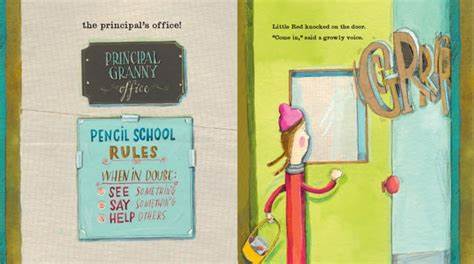



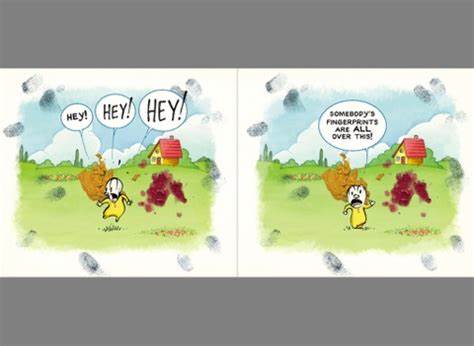








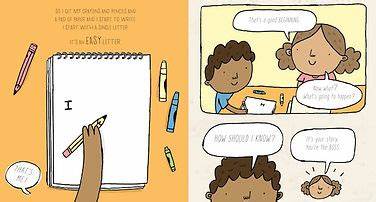



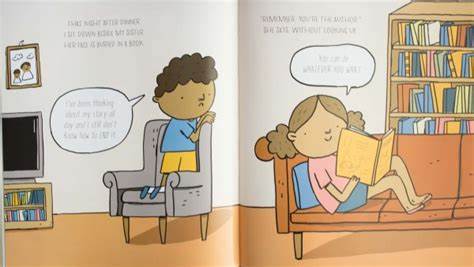



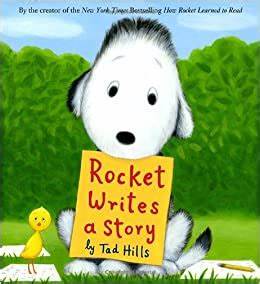































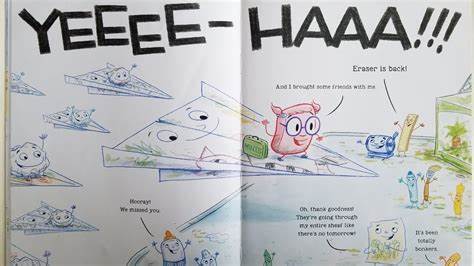















Comments